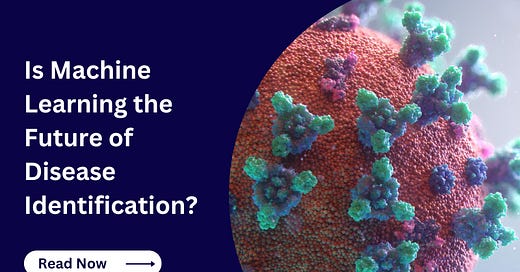Is Machine Learning the Future of Disease Identification?
How Machine Learning Imaging Can Be Used in Disease Diagnostics
Did you know that fewer than 10% of healthcare organizations use artificial intelligence? This is surprising, considering how integrated AI has become within other industries.
However, with the possibility of using ML-driven image processing in disease identification, this could be about to change. Keep reading to determine if machine learning is the future of disease identification.
Google’s AI Imaging and Diagnostic Tool
Working with healthcare organizations worldwide, Google’s research team aims to create an AI-driven imaging and diagnostics tool to assist clinicians. It’s thought that this technology will help diagnose skin conditions, anemia, cardiovascular issues, lung cancer, and breast cancer.
Additionally, Google’s AI diagnostic technology will have the power to predict diseases and blindness before they even happen. This makes catching and treating patients earlier for certain illnesses and increasing chances of prevention far more likely.
How Does ML Imaging Technology Work?
The functionality of machine learning (ML) technology in health imaging varies depending on the condition. For example, Google’s technology will use AI-driven image search capabilities to assess potential skin conditions, while lung cancer will be predicted using deep learning data in clinical tests.
Ultimately, however, ML imaging technology is based on machine analysis of diverse datasets, case studies, image comparisons, and refined user inputs. As well as predicting and identifying illnesses, the data collated by ML algorithms can also be used to produce more effective treatment plans.
Image Processing to Detect Malaria in Africa
In a study conducted by the University of Westminster, London, researchers used imaging software on mobile phones to detect malaria in blood. The researchers attached microscopic lenses to mobiles, which they used to capture images of patient blood samples.
The images were then processed by analytical software installed on their devices, using image processing algorithms to detect characteristics of malaria parasites in the blood samples. The identified features were then used to determine whether the samples were positive or negative for malaria.
The authors of the study reported high accuracy rates for the system and suggested that it has the potential to improve malaria diagnosis and treatment in low-resource settings, partly thanks to its portability.
Advantages of Machine Learning in Disease Identification
Machine learning imaging in disease identification and healthcare at large offers many innovative opportunities and advantages. Here are just a few advantages of ML-driven disease identification.
Early Detection: Machine learning models can detect the early signs of diseases, allowing for early intervention and increasing the chances of successful treatment.
Accurate Diagnosis: ML algorithms can analyze large amounts of data to identify patterns that might not be obvious to human experts, leading to more accurate diagnoses.
Reduced Healthcare Costs: Early detection and accurate diagnosis can lead to more efficient treatment, reducing healthcare costs and improving patient outcomes.
Predictive Analytics: ML imaging models can use data to predict the likelihood of future health issues, enabling healthcare providers to take proper preventive measures.
Challenges of Machine Learning in Disease Identification
As with all complex technology, using machine learning in disease identification has its challenges. Here are just a few to consider:
Limited Availability of Data: Access to large, high-quality datasets for training machine learning algorithms can be limited, particularly for rare diseases.
Bias: Machine learning models can be biased toward certain groups or demographics, leading to inaccurate or unfair predictions.
Security and Privacy: Medical imaging data is sensitive and must be handled carefully to ensure patient privacy and comply with regulations such as HIPAA.
Validation and Regulatory Approval: Validating machine learning models and obtaining regulatory approval for their use in clinical settings can be a complex and time-consuming process.
Verdict: Is ML the Future of Disease Identification?
Tech companies like Google and researchers like those at the University of Westminster have made excellent progress in developing valuable ML-driven tools for disease identification. If this continues, bringing similar benefits such as those found in malaria trials, it’s likely we’ll see more technology like this arise.
Thanks for reading.
If you enjoyed this article, please subscribe to receive email notifications whenever we post.
AI Business Report is brought to you by Californian development agency Idea Maker.



